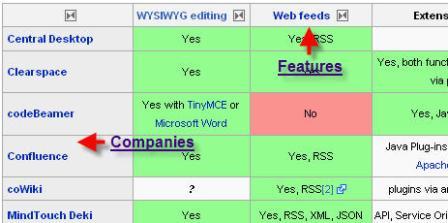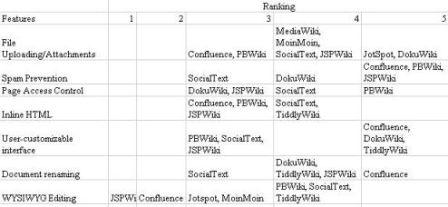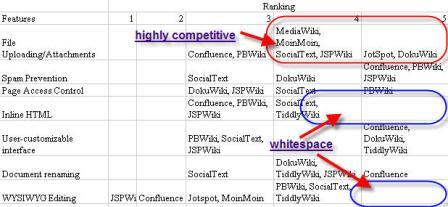The motivation to write this post came out few days ago when I was chit-chatting with Bitzermobile’s India team at a CCD in Marathahalli. Thought it’d be great idea to share it further.
 I’m an introvert. A classic one. Ready to lose the debate rather than speak. I hate talking to people. I hate breaking the ice. I also think, if I talk to them, they’ll assume that I have an agenda. I also think, if I talk to them, I won’t have any topic of interest and would be a reject.
I’m an introvert. A classic one. Ready to lose the debate rather than speak. I hate talking to people. I hate breaking the ice. I also think, if I talk to them, they’ll assume that I have an agenda. I also think, if I talk to them, I won’t have any topic of interest and would be a reject.
However, in the last 5-6 years, I’ve learnt to cover up my introverted-ness with a false facade of extroversion. The realization came to me after many years of feedback from some of the amazing bosses and mentors, I’ve had in life.
As an introvert, you can survive and do really well in businesses where you either do not deal with people or have an army of people who deal it for you. In today’s hyper-competitive environment, having a facade of extroversion is key to survival. You can’t keep quiet when pitching to customers, you can’t twiddle your thumb when you are asked to present to a room full of partners in a VC meeting and more importantly you can’t let your people down in your startup by keeping quiet. Instead, you stand, raise your hand and speak-up on every opportunity.
Here are some of the weird qualities of an introvert (from my personal experience):
- Don’t like to talk, if don’t have a point
- Don’t interact with people, if there ain’t a reason. Random guy in front would never be greeted
- Don’t “hang-out” in public
- Lonely is good. Leave me to my thoughts
- Share thoughts once and assume that people got it
- No ice-breakers, no small talk
Though, I have been fixing my introverted self for many years by doing things which my psyche did not allow, I still get called out in meetings with comments like, “Why are you so quiet? Do you have anything else to say?” (Whereas, I thought that I already spoke volumes!)
Some of the things I did to “fix” the introversion:
- The first thing is to realize the psychological condition and accept that it’s perfectly normal. 50% of the world is introvert! Some of the best CEOs are. The current POTUS is one.
- Practice a measured set of small talk with small groups and previously unknown people. There are many opportunities. Attempt massive amounts of networking. Use the 3-second / 6-second techniques.
- Get public speaking engagements. Now, this is a normal quality of introverts that if people talk to them then they get going. How do you get more and more people talking to you in first place? Get speaking engagements. For the last 3 years in Bangalore, I was a foolish and a hungry speaker. Given an opportunity, I would walk into an auditorium or a classroom even when there were less than a handful people. Though, the larger motive was to share and show what we were doing at Morpheus, but the big hidden agenda was to fix the condition and get talking to more people.
- Practice confrontation. This is very very important. I was shit scared of confronting people even when wrong was being committed. I use to convince myself that it was okay to let-it-go. Pick small debates and lose it. Keep losing small debates here and there. It’s ok. Your psyche will soon not send that signal to your heart to pump blood feverishly. I still avoid confrontation, but when I do, I no longer shake / shiver (but my voice does get modulated!)
- Reach early at meetings, discussions, meetups. This is a very cool trick which helped a lot. Early means few people around and by the time it gets to mass, you already know a few faces and most importantly the surroundings.
- The most important one is to not convert. Introversion is a prize, don’t throw it away.
I think introversion is a good psyche to have, it makes you think, it makes you give others an opportunity, it makes you creative and reflective of your actions, however, the quality has to be harnessed to become successful. If you still don’t believe into the power of You as an introvert, then this TED talk by Susan Cain is a must watch.
I should have written this post 25 years ago and sent it to girls who wanted a date and thought I should make the move. Alas, I was an introvert.



 Unless you write a manuscript and revise it multiple times and get rejected by at least 5 publishers–how can you write one of India’s best-selling book? Unless 20 VCs label your ideas as stupid, how can the 21st get it funded?
Unless you write a manuscript and revise it multiple times and get rejected by at least 5 publishers–how can you write one of India’s best-selling book? Unless 20 VCs label your ideas as stupid, how can the 21st get it funded?
 Moreover, working together for some time helps people gauge the ‘mutual fit’ before signing each other up for 4-5 years. It is quite possible that after sometime a few members of the team decide to mutually part way and move-on. The question pops — what/how much would be the compensation if things do not move forward into a formal agreement? How much should be the compensation for the person who has worked his ass off but now thinks that he needs to move on?
Moreover, working together for some time helps people gauge the ‘mutual fit’ before signing each other up for 4-5 years. It is quite possible that after sometime a few members of the team decide to mutually part way and move-on. The question pops — what/how much would be the compensation if things do not move forward into a formal agreement? How much should be the compensation for the person who has worked his ass off but now thinks that he needs to move on?